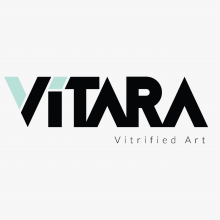Vitrified tiles are a highly sought-after flooring solution, especially in contemporary homes and commercial spaces, due to their unique fusion of elegance and durability. Crafted by grinding silica and clay at high temperatures, vitrified tiles offer a non-porous, glass-like surface that is resistant to stains, scratches, and moisture. The 400x400mm size makes these tiles ideal for various applications, from extensive flooring to decorative wall installations. The availability of different colors, patterns, and finishes allows for artistic expression in interior design. These tiles are the perfect choice for high-traffic areas such as living rooms, kitchens, and bathrooms, ensuring a lasting and luxurious appeal. With easy cleaning and maintenance, vitrified tiles will enhance the aesthetic and functional quality of any space, making them a favorite in both residential and commercial projects.
Key Features
| Features | Description |
|---|---|
| Material | Fused silica and clay |
| Surface Type | Non-porous, glass-like finish |
| Size | 400x400mm |
| Durability | Highly scratch and stain-resistant |
| Moisture Resistance | Excellent moisture-proofing |
| Maintenance | Easy to clean and maintain |
| Design Versatility | Available in various colors and patterns |
| Applications | Ideal for high-traffic areas including residential and commercial spaces |
| Attributes | Description |
|---|---|
| Type | Vitrified Tiles (GVT/PGVT) |
| Usage | Floors and walls |
| Finish | Glossy |
| Color Options | Multiple colors available |
| Installation | Suitable for adhesive installation |
| Water Absorption | <0.5% |
| Thickness | 8-10 mm |
| Certifications | ISO certified |
Key Words
*Disclaimer: The above description has been AI-generated and has not been audited or verified for accuracy. It is recommended to verify product details independently before making any purchasing decisions.
Brand: VITARA
Country Of Origin: India
Applications
Benefits of Choosing 400x400 mm Vitrified Tiles
Maintenance Tips
Elevate Your Space
Bring elegance and durability to your interiors with our 400x400 mm vitrified tiles collection. Whether you’re revamping your home or designing a commercial project, our tiles are the perfect choice.
Products sold on GlobalLinker are managed, shipped and serviced by the Seller. The return timeframe of each product will be as decided by the seller. You may view the Seller name on the product page.
If you purchase products from multiple sellers in an order each item will be fulfilled by the respective sellers. Also each product in your order will either be returnable or non-returnable as it is governed by the seller's shipping policy. Cancellation or return (if applicable) requests are to be placed for every item in your order. The below policies are outlined at an item level.
You may request a cancellation until the order is marked as "packed" and ready for shipping. After this point, cancellations are not possible; however, if the item is returnable, you may request a return.
If the Seller or GlobalLinker cancels any items in your order due to unforeseen circumstances, you will receive a refund for those items. Note that cancellations may not apply to customised products.
Contact us at **** OR +****
Shipping & Delivery Policy
Any shipping and delivery matters are governed by this policy ("Shipping & Delivery Policy")
1. Delivery charges
a. You will be shown the delivery charges due for each order prior to making a payment. We work with logistics providers to provide you with the best possible rates, where applicable.
2. Dispatch time
Please allow 2-5 working days post your placement of order for the shipment to be dispatched.
3. Delivery time
The delivery time is approximately 5 working days for domestic shipments from the date of shipment within India. Deliveries will be made to the address provided by you at the time of the order.
Though we endeavour to ensure that the shipment reaches you in time, there may be delays due to unforeseen circumstances.
4. Damaged / Defective goods
If the goods you receive are damaged or defective or not matching your order, you will be required to intimate us about such cases within 24 hours of delivery. Please refer to our Returns & Exchange policy for more details.
5. Product Returns
The shipping costs incurred for the return of any item(s) will be borne you. Please refer to our Returns & Exchange policy for more details.





Inclusive of all taxes
You Save: 0.00
